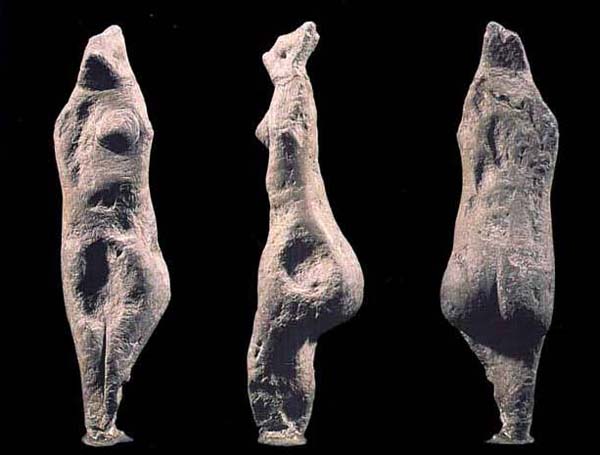It is probably the oldest anthropomorphic representation found in Sardinia, even if its dating is uncertain. The uncertainty is also due to the uniqueness of the figurine which cannot be associated with other finds.
It is a statuette made on a pebble of lava rock (basalt or andesite) in an unfinished style, steatopygia, or with adipose buttocks, naked with legs together which end in a conoidal mass. The figure has no arms and has a single breast on the left side of a very regular conical shape. The profile of the head is not human, it is zoomorphic, as if the figure were wearing an animal mask. It has an acute snout with a sub-pyramidal shape and two short and wide appendages that look like ears surmounting the head. The eyes are lateral. It has been associated (Mussi) with the representation of the head of the prolagus sardus, an extinct rodent that was present in Sardinia, Corsica and other minor islands starting from the lower Pleistocene up to the Holocene. The prolagus it was a very prolific animal, so it is not too far to think that it was represented to indicate fertility. The combination of the human and animal elements would find its explanation in the context of shamanic practices.



Historical notes
The statuette was found in the late 40s following a clandestine excavation inside the cave known as Riparo S'Adde, which opens into the basaltic rocks on the banks of the Rio S'Adde, practically inside the town of Macomer. It seems that this "it was not found in the pile of other artifacts, but imprisoned in a mass of bone breccia, formed by deposit inside the cave” (Fish, 1949, p. 124). At the time of the discovery of the Macomer statuette, in 1949, Felice Cherchi Paba, the finder, claimed the exceptional discovery of a Paleolithic Venus, but the dating aroused many discussions. Almost all scholars of the time attributed the statuette to the Neolithic.
CARD
LATEST PUBLISHED TEXTS
VISIT THE FACTSHEETS BY OBJECT

